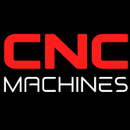Distributed Manufacturing: Decentralizing Production for Agility and Resilience

🌍 Distributed Manufacturing: Decentralizing Production for Agility and Resilience
In an era marked by rapid technological advancements and shifting consumer demands, traditional centralized manufacturing models are being re-evaluated. Distributed manufacturing emerges as a transformative approach, decentralizing production processes to enhance flexibility, reduce costs, and bring manufacturing closer to the end-user.
🔍 What Is Distributed Manufacturing?
Distributed manufacturing refers to a decentralized production model where manufacturing activities are spread across multiple geographically dispersed facilities, coordinated through digital technologies. This approach enables products to be produced closer to their point of use, reducing transportation costs and lead times, and allowing for greater customization to meet local preferences.
🕰️ A Brief History
The concept of distributed manufacturing has evolved alongside advancements in information and communication technologies. Initially, manufacturing was centralized to capitalize on economies of scale. However, the rise of digital fabrication tools, such as 3D printing, and the increasing demand for customized products have propelled the shift towards more decentralized production models.
✅ Advantages of Distributed Manufacturing
1. Enhanced Supply Chain Resilience
By decentralizing production, companies can mitigate risks associated with supply chain disruptions, such as those caused by natural disasters or geopolitical tensions. Localized manufacturing facilities can continue operations independently, ensuring continuity.
2. Customization and Personalization
Distributed manufacturing allows for products to be tailored to local market needs and consumer preferences, enhancing customer satisfaction and competitiveness.
3. Reduced Environmental Impact
Producing goods closer to the point of consumption decreases the need for long-distance transportation, thereby reducing carbon emissions and contributing to sustainability goals.
4. Faster Time-to-Market
Localized production facilities can respond more quickly to changes in demand, enabling faster product delivery and improved responsiveness to market trends.
⚠️ Challenges of Distributed Manufacturing
1. Coordination Complexity
Managing multiple production sites requires robust digital infrastructure and coordination mechanisms to ensure consistency and quality across facilities.
2. Initial Investment
Establishing decentralized manufacturing networks can involve significant upfront costs in technology and training.
3. Quality Control
Ensuring uniform quality standards across various locations can be challenging, necessitating stringent quality assurance protocols.
🌐 Real-World Applications
🏥 MyMaskFit
In response to the COVID-19 pandemic, MyMaskFit implemented a distributed manufacturing model to produce customized protective masks. By leveraging a network of local production facilities, they were able to rapidly meet varying regional demands and reduce reliance on centralized supply chains.
🧪 Gigalab by Re:3D
Re:3D's Gigalab is a portable, off-grid 3D printing lab housed in a shipping container. It transforms recycled plastic waste into useful products onsite, exemplifying distributed manufacturing's potential in remote or underserved areas.
🔮 The Future of Distributed Manufacturing
As digital technologies continue to advance, distributed manufacturing is poised to become more prevalent. The integration of artificial intelligence, the Internet of Things (IoT), and advanced robotics will further enhance the efficiency and scalability of decentralized production models. This evolution promises to make manufacturing more responsive, sustainable, and aligned with the needs of diverse markets


